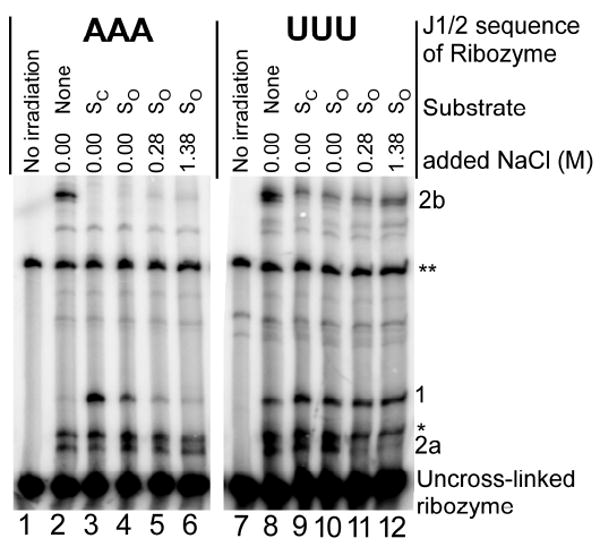Figure 7.

Photo-crosslinking products for 5′-azido labeled L-21 ScaI ribozymes with AAA (R3A) and UUU (R3U) in the J1/2 junction. The species listed are defined in Table 2. Conditions: 50 mM MOPS, pH 7.0, 10 mM Mg2+, 23 °C, with varying concentrations of NaCl. Oligonucleotide SC, 5′-r(CCCUCU)-3′, favors the closed complex. Oligonucleotide SO, 5′-r(CCCmUCU)-3′, favors the open complex34,35; ‘m’ refers to a 2′-OCH3 substitution. The varying NaCl concentration was used to destabilize residual closed complex1,38. As expected, intensity of band 1, the band associated with the closed complex in R3A, decreases with increasing NaCl concentration (lane 3-5). However, the intensity of band 2a, the band associated with the open complex in R3A, does not increase detectably with increasing NaCl for R3A (lane 3-5). For R3U, band 2a weakens with increasing NaCl concentration. A possible explanation is that increasing NaCl concentration renders the conformation associated with forming crosslinking at 2a less favorable compared to conformations that give crosslinking at other positions or do not give crosslinking.
